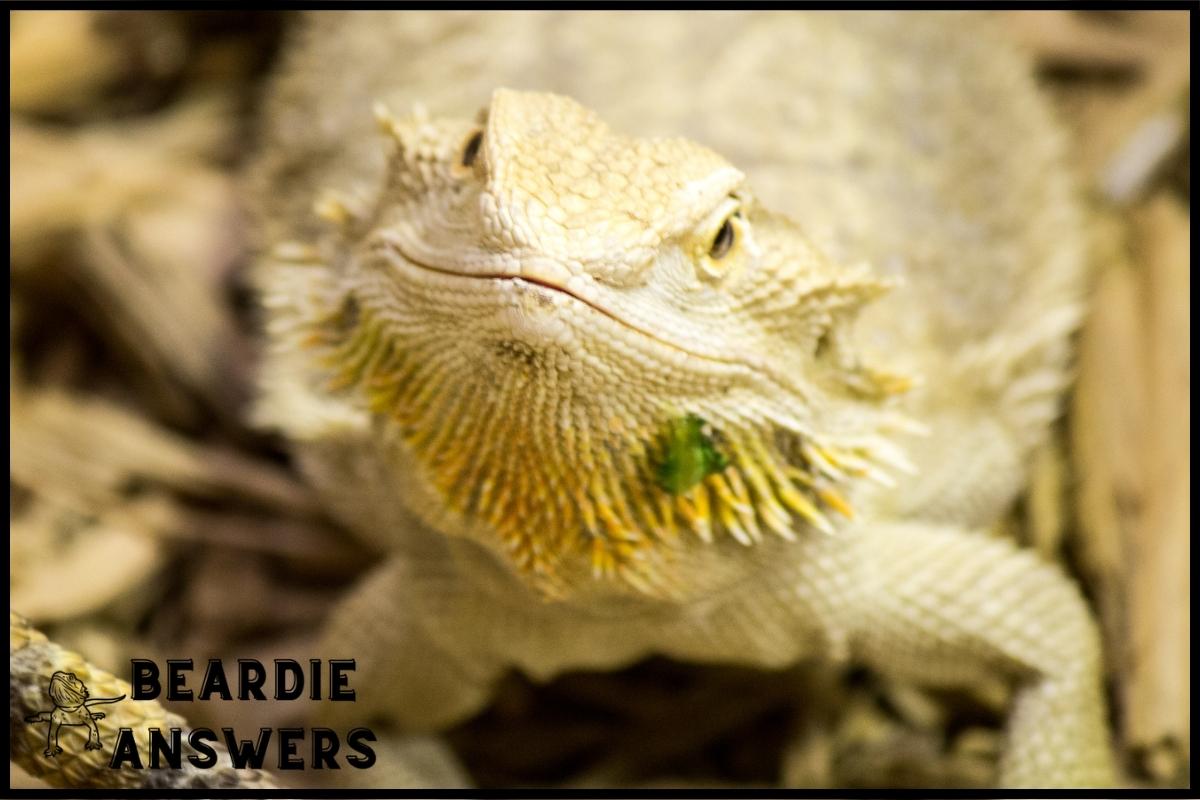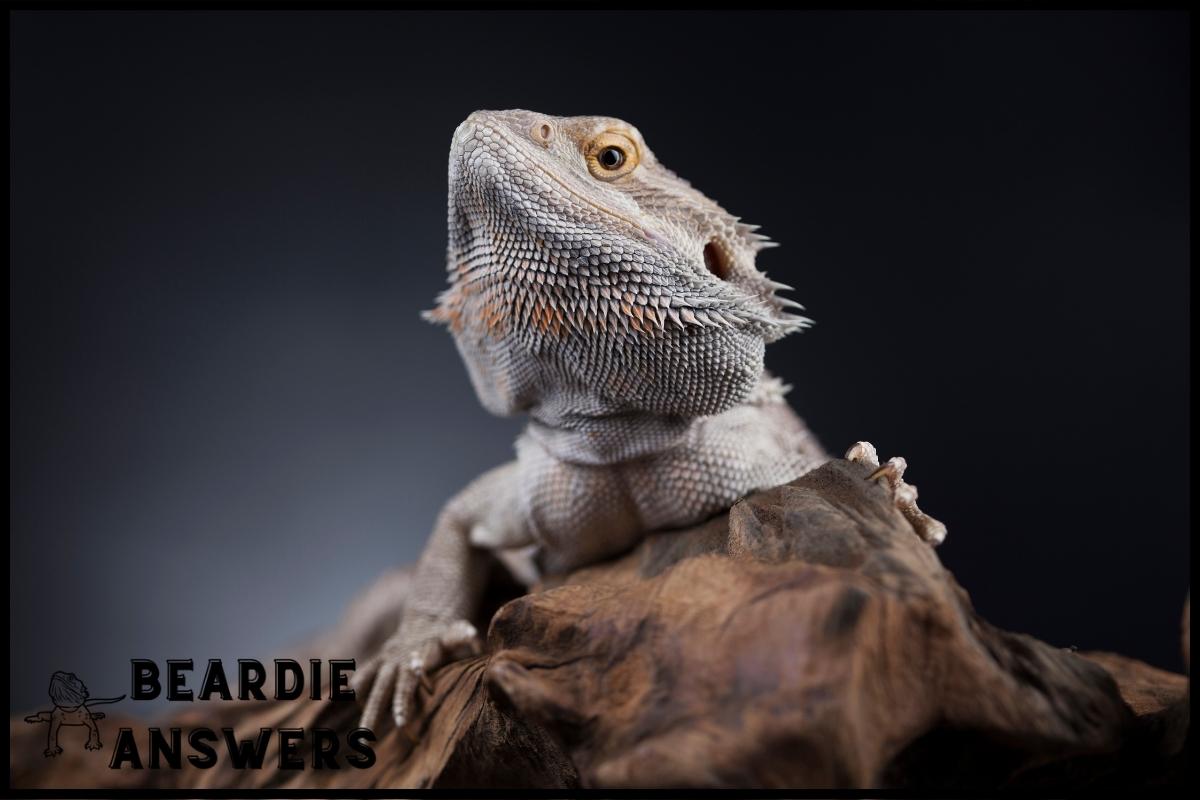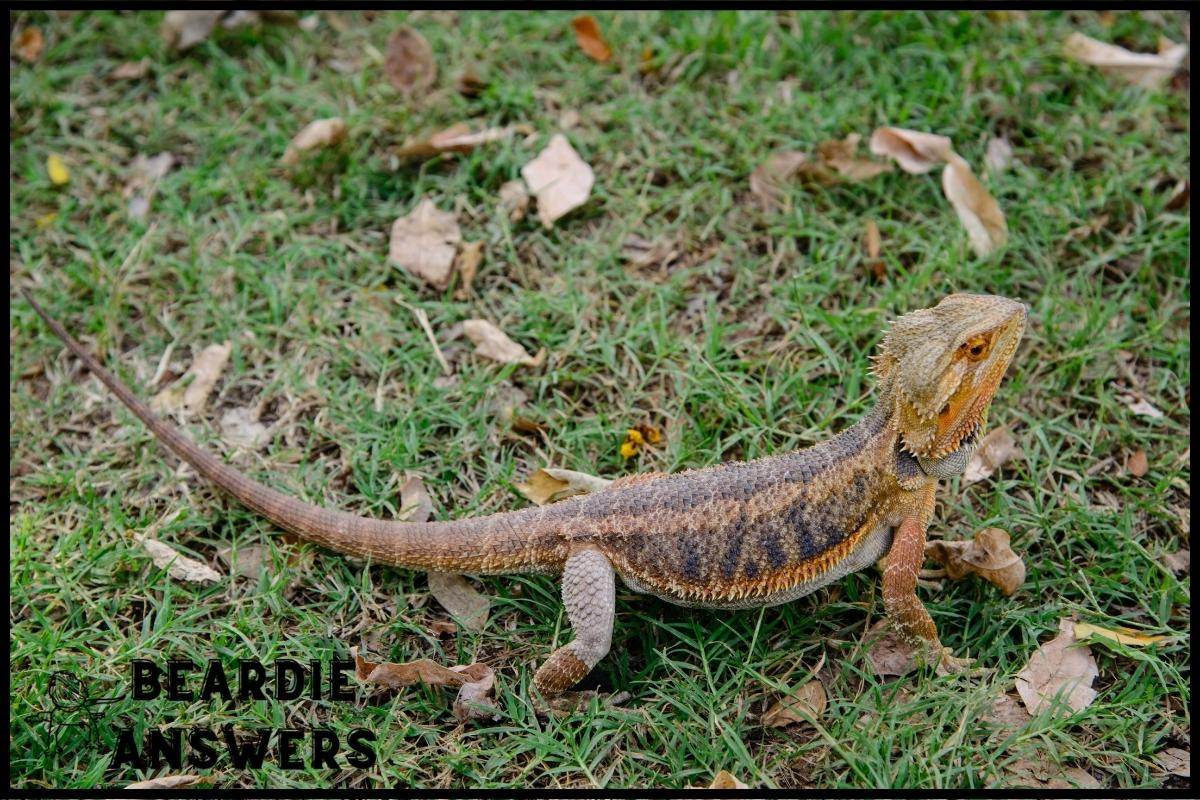Romaine lettuce is low in nutritional value compared to other greens like kale or collard greens, so it should be given sparingly or as a treat.
What You'll Learn
Romaine Lettuce – Yay or Nay?
Romaine lettuce is a popular salad green with a crisp texture and sweet flavor. It’s one of the most common vegetables used in organic farming, as it can tolerate colder temperatures and grows quickly.
When added to salads or other dishes, romaine lettuce adds an interesting variety to any diet. The visual appeal of this vegetable makes it a great choice for both human and animal consumption. Its long leaves are light green at the base while the tips have dark veins that give off a slightly bitter taste when eaten raw.
Romaine lettuce also has plenty of crunchy ribs running through its middle, making it surprisingly filling despite its low calorie count. This leafy green provides many health benefits, so adding it to your bearded dragon’s diet may be beneficial – although there are better options available for providing nutritional value.
Moving on from here, let’s look into what kind of nutrients romaine lettuce offers bearded dragons specifically.
Nutritional Value For Bearded Dragons
Vegetables are a vital part of the bearded dragon diet, providing much-needed plant nutrition and important vitamins. Romaine lettuce is an often overlooked vegetable for these reptiles, but it can be beneficial when incorporated into their diets with care.
However, just like any other vegetable, its nutritional value needs to be taken into consideration in order to prevent calcium deficiency and other health problems.
Romaine lettuce contains small amounts of vitamins A and C and some minerals such as potassium and magnesium; however, it is relatively low in essential nutrients compared to other greens such as collard greens or turnip greens. It also has very little calcium content which can lead to serious deficiencies if not balanced out by supplements or other sources of calcium.
Additionally, romaine lettuce does contain oxalates that may inhibit absorption of certain minerals including calcium so too much should be avoided.
Therefore, while romaine lettuce can still provide some benefits to a bearded dragon’s diet when eaten occasionally, it should not make up a large portion of their overall food intake due to its lack of nutrient density. Rather than relying solely on this type of lettuce for nourishment, owners should incorporate other leafy green vegetables along with vitamin and mineral supplements to ensure their pet receives all the necessary nutrients they need for optimal health.
To continue on toward better nutrition for beardies, we must consider how best to prepare romaine lettuce before feeding them.
How To Prepare Romaine Lettuce
Romaine lettuce is a great food for bearded dragons, but it needs to be prepared properly before serving. To ensure your dragon gets the most nutrition out of their romaine lettuce, there are several steps you should take when preparing and serving it.
The first step in preparing romaine lettuce is to wash it thoroughly. It’s important to remove any dirt or residue that may still be on the leaves after harvesting. You can do this by running cold water over the leaves and gently scrubbing them with your hands or a vegetable brush.
Once washed, make sure to pat dry the leaves with paper towels so they don’t become soggy when served.
After washing and drying, you have multiple options for how to serve your bearded dragon’s romaine lettuce meal. One option is to chop up the lettuce into small pieces and mix it in with other greens like collard greens. This way all of the nutrients from each type of green will combine together for an overall nutritious meal for your pet lizard.
Another option is slicing thin strips off of the head of romaine lettuce and laying them flat on a plate for your dragon to munch on as they please. Both methods provide sufficient amounts of vitamins and minerals necessary for good health!
With these tips in mind, you’re now ready to safely incorporate romaine lettuce into your bearded dragon’s diet without worrying about potential risks associated with feeding them raw vegetables–but more on that later!
Potential Risks Of Feeding Romaine Lettuce
Romaine lettuce can be a part of a balanced diet for bearded dragons, but there are potential risks associated with feeding it. Namely, pesticide contamination and digestion issues.
Pesticides sprayed on romaine leaves can potentially harm your pet if ingested in high amounts. To avoid this issue, make sure to buy organically grown romaine lettuce and thoroughly wash the leaves before giving them to your dragon.
Digestion issues may also arise from eating romaine lettuce. The texture is quite hard and fibrous which means that some lizards may struggle to digest it properly or even at all. It’s important to monitor their reactions after feeding them romaine lettuce and adjust accordingly.
To sum up, while romaine lettuce has its benefits as part of a balanced diet for bearded dragons, there are potential risks such as:
- Pesticide Contamination
- Digestion Issues
- Hard Texture & Fibrous Leaves
It is essential to keep these factors in mind when deciding whether or not to feed your lizard romaine lettuce. Moving on, let’s take a look at alternatives to romaine lettuce…
Alternatives To Romaine Lettuce
When it comes to feeding bearded dragons, romaine lettuce is often one of the first greens that come to mind; however, there are many alternatives with more nutritional value. Like a kaleidoscope of nutrition, dark leafy greens offer an array of options that can provide essential vitamins and minerals while also supplementing their insect protein intake. Below is a comparison chart showing some common alternative vegetables for bearded dragon diets:
| Vegetable | Vitamin A (IU/100 g) | Calcium (mg/100 g) | Iron (mg/100 g) | Phosphorus (mg/100g) |
|---|---|---|---|---|
| Kale | 4930 | 29 | 0.9 | 39 |
| Turnip Greens | 6390 | 99 | 1.4 | 66 |
| Collard Greens | 8290 | 79 | 2.5 | 55 |
| Mustard Greens | 5460 | 88 | 3.3 | 57 || Spinach | 4840 | 99 | 2.7 | 58 |
As you can see from the table above, these dark leafy green alternatives have substantially higher amounts of essential vitamins and minerals than romaine lettuce does. For instance, turnip greens contain over twice as much calcium and phosphorus compared to romaine lettuce, making them great supplements for increasing bone health in bearded dragons! Furthermore, mustard greens boast almost three times as much iron as romaine does which helps support oxygen transportation throughout the body’s cells and tissues. In addition to providing vital nutrients, these vegetables also introduce variety into your pet’s diet – something they will certainly appreciate! With so many benefits on top of being nutritious, why not give these options a try?
Conclusion
In conclusion, romaine lettuce can be a beneficial part of your bearded dragon’s diet but should not be the only source of greens. Feeding them too much Romaine lettuce can cause health issues and diminish their energy levels to an almost comical extent.
Fortunately, there are many alternatives that will provide a more balanced nutrition for your reptile friend. It is important for you as the pet owner to monitor how much Romaine lettuce they consume and ensure that it does not become their primary source of food.
By doing this, you’ll guarantee that your beloved beardie lives a long and healthy life – one filled with plenty of vitamins, minerals and other essential nutrients!

Hi! My name is Bryan, I am the “one behind the words” here are BeardieAnswers.com. I believe that providing quality care and nutrition is the best way to ensure the health of your pet. Every beardie is special and deserves the best care and attention. If you have questions about your bearded dragon, please don’t hesitate to ask! View My Full Author Page




